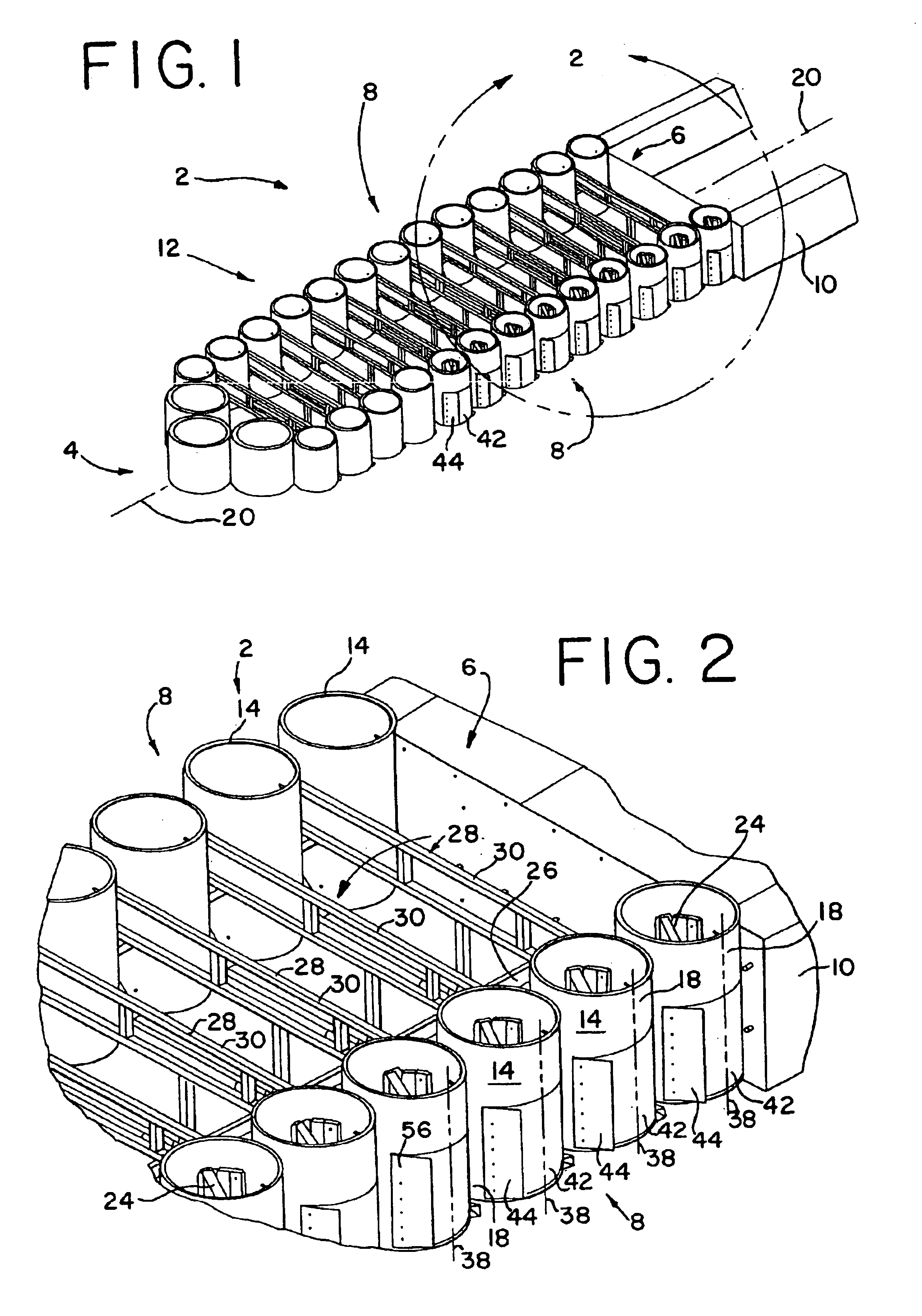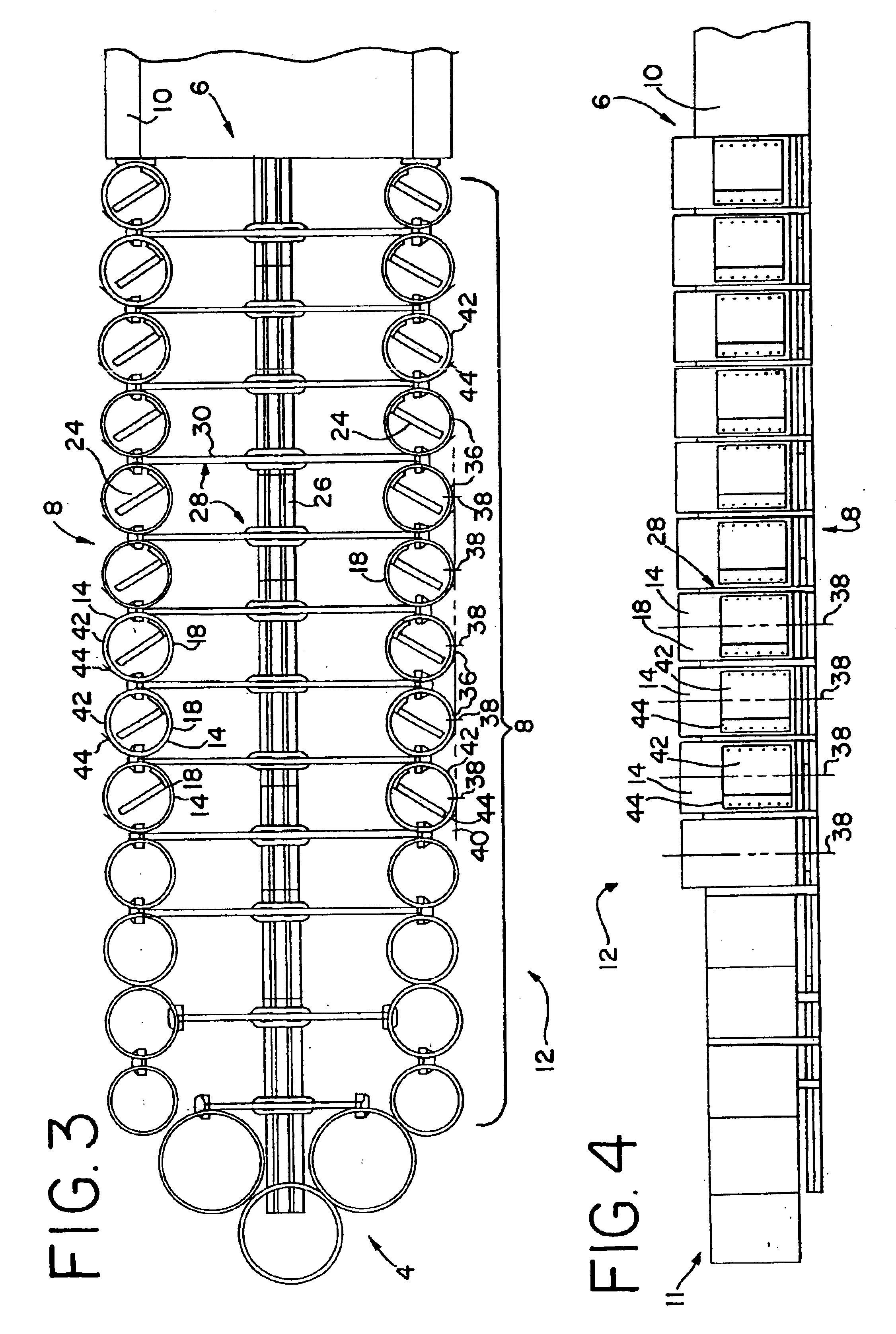Crash cushion with deflector skin
a cushion and deflector technology, applied in the field of crash cushions, can solve the problems of relatively expensive structural rigid plates of fish scales, and achieve the effect of less friction coefficient and not as easily gouged
- Summary
- Abstract
- Description
- Claims
- Application Information
AI Technical Summary
Benefits of technology
Problems solved by technology
Method used
Image
Examples
Embodiment Construction
Referring to FIGS. 1-4, one preferred embodiment of a crash cushion 2, otherwise referred to as a vehicle impact attenuator, is shown in an initial position, prior to impact. The crash cushion 2 has a front 4 facing the flow of oncoming traffic and a rear 6 positioned adjacent to a backup 10, which can be any hazard alongside a roadway. Typically, the backup 10 is a rigid object, such as a bridge abutment, tollbooth, wall, guardrail, moving vehicle such as a truck, or other obstruction positioned in or along the roadway. The crash cushion 2 also has a pair of opposite sides 8, at least one of which is exposed to the roadway and the flow of traffic. In one embodiment, shown in FIGS. 1-4, both of the sides 8 are exposed to the traffic flow, for example when the crash cushion 2 is positioned in front of a tollbooth. In other embodiments, the crash cushion 2 may have only one side exposed to the traffic, with the other side facing away from the traveled lanes of the roadway, and which m...
PUM
 Login to View More
Login to View More Abstract
Description
Claims
Application Information
 Login to View More
Login to View More - R&D
- Intellectual Property
- Life Sciences
- Materials
- Tech Scout
- Unparalleled Data Quality
- Higher Quality Content
- 60% Fewer Hallucinations
Browse by: Latest US Patents, China's latest patents, Technical Efficacy Thesaurus, Application Domain, Technology Topic, Popular Technical Reports.
© 2025 PatSnap. All rights reserved.Legal|Privacy policy|Modern Slavery Act Transparency Statement|Sitemap|About US| Contact US: help@patsnap.com



